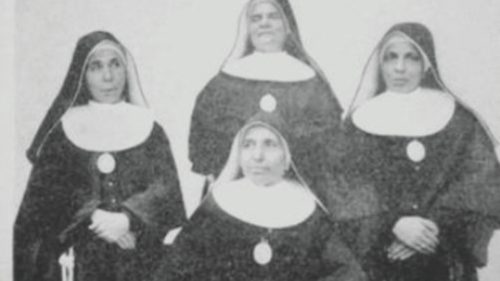
I recently spent a few days’ holiday in a town on the shores of Lake Garda where the memory of two Christians, Giuseppe Nascimbeni and Maria Domenica Mantovani, co-founders of the Institute of the Little Sisters of the Holy Family, lives on. Unknown to most, they were both declared Blessed in 1983, him and her in 2000, the first step on the road to full ecclesiastical recognition of their holiness.
I was told their truly exemplary story, not only because of their respective virtues, as is necessary for canonisation, but also because the life of this priest and his first disciple tells the story of a specific area in Italy. Here we are in Verona, which was an area in the transition between the 19th and 20th centuries; strongly rooted in the Catholic tradition, but also tragically poor, and forced into social breakdown by those constricted to emigrate.
Apart from the “heroic virtues” of the two founders, what struck me in the telling of their story was knowing that, just over twenty years after the start of the Institute’s life, 120 sisters had taken part as nurses in the First World War. No one knows what they must have seen, experienced, or suffered, what “heroic virtues” they were able to live through in that boundless drama that history books refer to as the First World War, and which Pope Benedict XV more correctly defined as the “useless slaughter”.
This is, of course, just one example, but it raises a fundamental question that is important for Catholics, and that is, who are the saints? Even when confronted with the significant critical pressure of the Lutheran Reformation, the Catholic Church has never wanted to renounce its golden reserve of men and women, who throughout history, have been considered by ecclesiastical authority as worthy of the honour of the altars.
Not even the minor reform attempted by Paul VI, which aimed to distinguish between real and legendary figures, has succeeded in undermining the deep-rooted tradition of worshipping the many saints, mythical perhaps, but firmly rooted in the different territorial realities, and the history of customs and popular identities. The Magisterium has always preferred to commit itself to correcting any deviances and abuses rather than renounce an element considered fundamental in the pedagogy of faith. It is with their exemplarity, that the saints are milestones and show the way to all those who wish to follow the Gospel.
Yet, even with regard to this Catholic faith praxis, that is the cult of the saints, something has changed. To the point that “my” 120 Little Sisters of the Holy Family who, even without specific nursing training, generously threw themselves into soothing the wounds of the useless massacre, are, in my opinion, knocking at the doors of the history of holiness for recognition of their rightful place. Not out of ambition, but out of justice. On the other hand, thanks to the Council, we have now acquired the awareness that when only a few are deemed worthy of sanctity, its immense value is squandered instead of being invested in, and that fidelity to the gift of baptism is more important than any hierarchy of perfection.
Did Apostle Paul not call all Christians “saints”? Moreover, does not that symbolic number of the 144,000 sealed in the Book of Revelation remind us that even holiness forged by martyrdom is a grace granted to the many?
It is no coincidence then that Pope Francis, in his Apostolic Exhortation Gaudete et Exsultate on the call to holiness in the contemporary world (19 March 2018), insisted on the holiness witnessed by the saints next door. He recalled the “heroic virtues” of doctors and nurses in the darkest months of the pandemic and invited us to discern “the signs of holiness that the Lord presents to us through the most humble members” of the people of God (no. 7). People who, after all, are holy not because they are virtuous, but because their God is holy (cf. Leviticus 19,2).
Paraphrasing the words of Francis, we could say that nobody is a saint alone. In the niches of the altars there is only room for one at a time. This is not so, however, in the history of God with his people.
by Marinella Perroni
Biblical scholar, Pontifical Athenaeum Saint Anselm













 Purchase the Encyclical here Fratelli Tutti
Purchase the Encyclical here Fratelli Tutti
